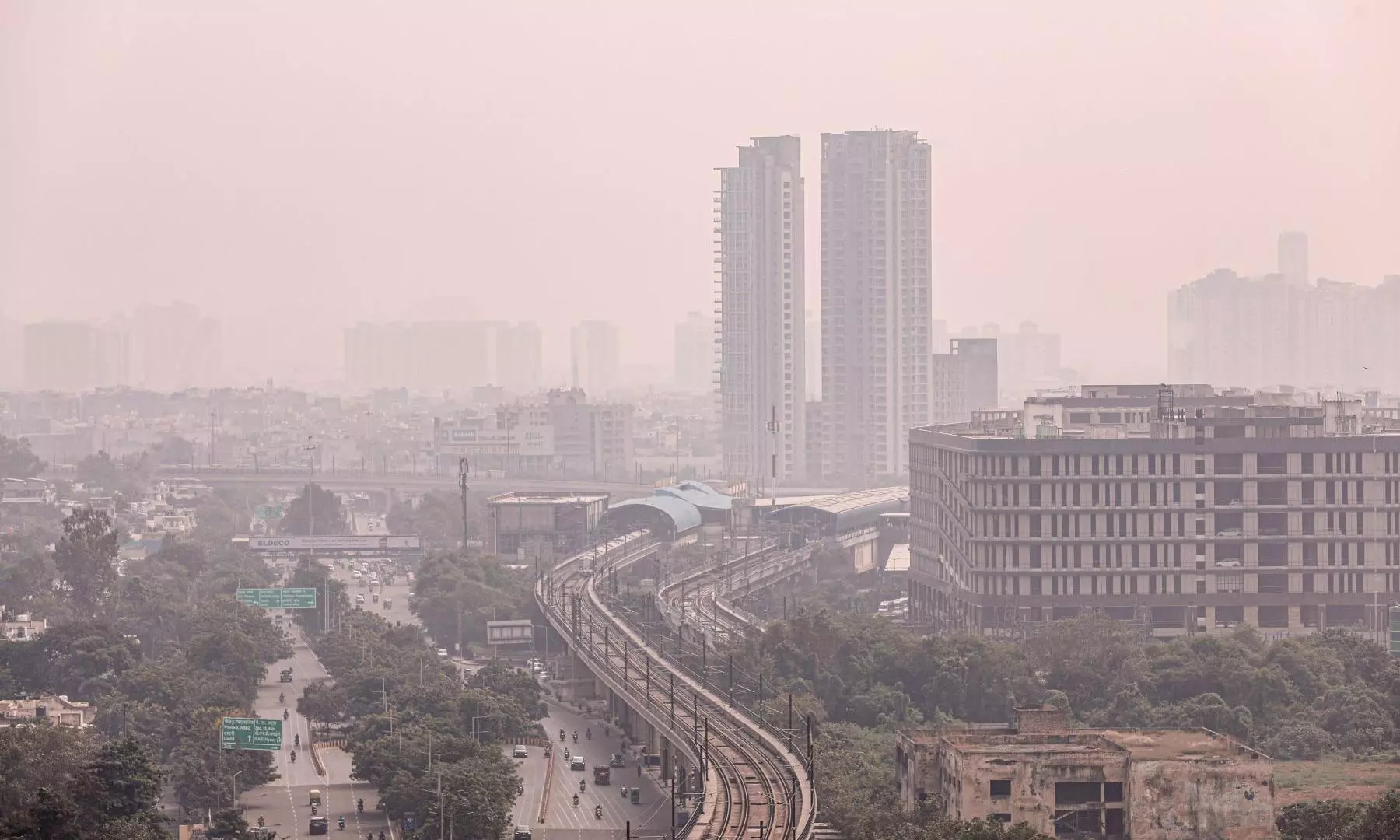
Delhi conducts first cloud seeding test to tackle air pollution
Delhi CM Rekha Gupta says it could help curb winter pollution; the IIT-Kanpur-led trial marks Delhi’s first artificial rain effort

Following the successful test run of the cloud seeding experiment, Delhi Chief Minister Rekha Gupta on Friday (October 24) said that it was essential for the national capital, noting that it could play a key role in controlling rising pollution levels during the winter season.
The test run of the cloud seeding experiment was carried out on October 23. Gupta said, “Cloud seeding is something that has never happened before. We want to carry out this trial over the city as it could help reduce air pollution," adding, “We believe this technology will be successful. It can be used to tackle environmental challenges in the future, especially those faced during the winter months”.
Also Read: Delhi CM Rekha Gupta says air pollution lower this Diwali
On Thursday night, Gupta confirmed in an X post that the trial conducted in the Burari area was successful.
Successful trial
“For the first time in Delhi, preparations have been completed to induce artificial rain through cloud seeding, marking a significant technological milestone in the capital's fight against air pollution. Experts on Thursday successfully conducted a trial test in the Burari area,” she wrote.
दिल्ली में पहली बार क्लाउड सीडिंग के माध्यम से कृत्रिम वर्षा कराने की तैयारियां पूरी कर ली गई हैं। आज विशेषज्ञों द्वारा बुराड़ी क्षेत्र में इसका सफल परीक्षण किया गया है।
— Rekha Gupta (@gupta_rekha) October 23, 2025
मौसम विभाग ने 28, 29 और 30 अक्टूबर को बादलों की उपस्थिति की संभावना जताई है। यदि परिस्थितियां अनुकूल रहीं, तो…
No rainfall
Officials said that during the trial, small amounts of silver iodide and sodium chloride, the compounds that were used to induce artificial rain, were released from an aircraft. However, no rainfall occurred due to lowest moisture level in the air.
According to IIT-Kanpur, during the trial, less than 15 per cent moisture was recorded. Cloud seeding typically requires a moisture level of around 50 per cent, which explains why no rainfall occurred in the area.
Also Read: Delhi in ICU, green crackers just a greenwash: Environmentalist Vimlendu Jha
In its report on the test run, IIT-Kanpur said, “This flight served as a proving mission to assess the capabilities for cloud seeding, the readiness and endurance of the aircraft, the functionality of the seeding equipment and flares, and the coordination among all the agencies involved.”
“There is no evidence of any precipitation, as the cloud cover was minimal and the moisture content was well below 15 per cent,” the report said, noting that specially-designed flares were used to release both compounds.
Delhi Environment Minister Manjinder Singh Sirsa said the flight served as a proving mission to assess the cloud-seeding system’s capabilities, aircraft endurance, and coordination among all the participating agencies.
Also Read: Delhi air quality 'very poor' two days after Diwali
MoU with IIT-Kanpur
The cloud-seeding project, jointly developed by IIT-Kanpur and the Delhi government, aims to explore artificial rainfall as a method to reduce particulate pollution levels in the city during the post-Diwali smog season and winter months.
Last month, the Delhi government signed a memorandum of understanding (MoU) with IIT-Kanpur for five cloud-seeding trials, which are expected to be conducted in northwest Delhi.
The project, approved by multiple departments, including the Directorate General of Civil Aviation (DGCA), aims to explore whether artificial rain can serve as a viable solution to tackle rising pollution levels during the winter.
Permission has been granted under Rule 26(2) of the Aircraft Rules, 1937, allowing IIT-Kanpur’s Department of Aerospace Engineering to conduct the activity using a Cessna 206-H aircraft (VT-IIT).
The Delhi Cabinet approved a proposal on May 7 to conduct trials at an estimated cost of Rs 3.21 crore.
However, the exercise faced repeated delays due to unfavourable weather conditions and the onset of southwest monsoon, with deadlines being pushed back from May-end to the second week of October.

